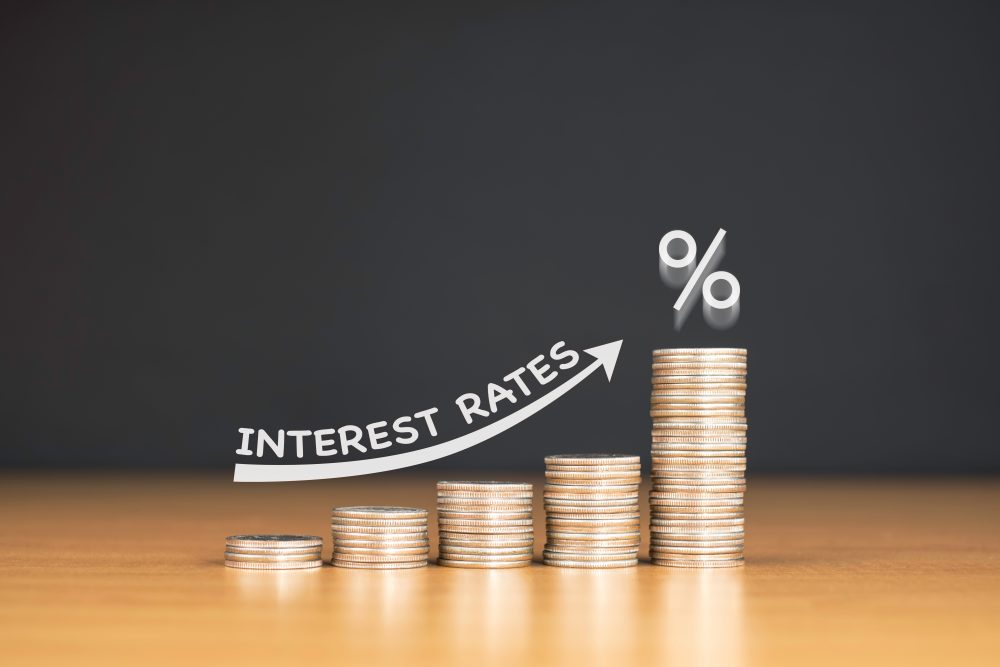As the global economy continues to evolve, the impact of rising interest rates on global markets has become a critical topic for businesses to understand. Interest rates, which influence borrowing costs and consumer spending, can significantly affect market dynamics. In this article, we will delve into the implications of increasing interest rates, exploring how they can reshape investment strategies, consumer behavior, and overall economic growth. Understanding these factors is essential for businesses aiming to thrive in a fluctuating financial landscape.
In the following sections, we will examine the direct effects of rising interest rates on various sectors, including real estate, manufacturing, and technology. We will also discuss the potential challenges and opportunities that businesses may encounter as they adapt to these changes. Furthermore, we will provide actionable insights and strategies that can help organizations mitigate risks and leverage the evolving market conditions to their advantage.
Whether you are a small business owner or part of a large corporation, staying informed about the impact of rising interest rates on global markets is crucial for making sound financial decisions. Join us as we explore this vital topic and equip yourself with the knowledge needed to navigate the complexities of the current economic environment. Read on to discover how your business can not only survive but thrive amidst rising interest rates.
As interest rates rise globally, businesses must navigate a complex landscape that affects their operations, financing, and overall market dynamics. Understanding the implications of these changes is crucial for strategic planning and risk management.
Understanding Interest Rate Trends
Interest rates are influenced by various factors, including inflation, economic growth, and central bank policies. As central banks respond to inflationary pressures by increasing rates, businesses must stay informed about these trends to anticipate changes in borrowing costs and consumer spending.
Monitoring interest rate trends can help businesses make informed decisions regarding investments and financing. For instance, a rise in interest rates may lead to higher loan costs, impacting capital expenditures and expansion plans.
Impact on Borrowing Costs
Rising interest rates directly affect borrowing costs for businesses. As rates increase, the cost of loans and credit lines rises, which can deter companies from taking on new debt. This can lead to reduced capital investment and slower growth.
Businesses should evaluate their debt structures and consider refinancing options to mitigate the impact of rising rates. Additionally, companies may need to adjust their financial strategies to maintain liquidity and manage cash flow effectively.
Consumer Spending and Demand
Higher interest rates can lead to decreased consumer spending as individuals face increased costs for mortgages, credit cards, and loans. This reduction in disposable income can negatively impact businesses, particularly in sectors reliant on consumer spending.
Understanding the relationship between interest rates and consumer behavior is essential for businesses to adapt their marketing strategies and product offerings. Companies may need to focus on value propositions that resonate with cost-conscious consumers during periods of rising rates.
Currency Fluctuations and Global Trade
Interest rate changes can influence currency values, affecting international trade dynamics. A stronger currency can make exports more expensive and imports cheaper, impacting businesses engaged in global markets.
Companies should monitor currency fluctuations and consider hedging strategies to protect against adverse movements. Understanding the interplay between interest rates and currency values is vital for businesses operating in multiple countries.
Investment Strategies in a Rising Rate Environment
As interest rates rise, businesses may need to reassess their investment strategies. Higher rates can lead to lower valuations for certain assets, prompting companies to be more selective in their investment choices.
Focusing on sectors that are less sensitive to interest rate changes, such as utilities or consumer staples, can provide stability. Additionally, businesses should consider diversifying their portfolios to mitigate risks associated with rising rates.
Real Estate Market Implications
The real estate market is particularly sensitive to interest rate changes. Higher rates can lead to decreased demand for housing and commercial properties, impacting real estate investments and development projects.
Businesses involved in real estate should closely monitor interest rate trends and adjust their strategies accordingly. This may include reevaluating property acquisitions, development timelines, and financing options to align with the changing market landscape.
Risk Management and Financial Planning
Effective risk management becomes increasingly important in a rising interest rate environment. Businesses should conduct stress tests and scenario analyses to understand the potential impact of rate increases on their financial health.
Developing a robust financial plan that accounts for rising rates can help businesses navigate uncertainties. This includes establishing contingency plans and maintaining flexibility in financial operations to adapt to changing conditions.
Long-term Economic Outlook
While rising interest rates can pose challenges, they may also signal a strengthening economy. Businesses should consider the long-term economic outlook and how it aligns with their strategic goals.
Engaging in proactive planning and staying informed about economic indicators can position businesses to capitalize on opportunities that arise from a changing interest rate environment. Understanding the broader economic context is essential for sustainable growth.
| Aspect | Impact | Considerations for Businesses |
|---|---|---|
| Cost of Borrowing | Higher interest rates increase the cost of loans for businesses and consumers. | Evaluate financing options and consider fixed-rate loans to mitigate risks. |
| Consumer Spending | Increased rates can lead to reduced disposable income, affecting consumer spending. | Adjust marketing strategies to focus on value and necessity products. |
| Investment Decisions | Businesses may delay or reduce capital investments due to higher financing costs. | Reassess investment plans and prioritize projects with higher returns. |
| Currency Fluctuations | Rising rates can strengthen a country’s currency, impacting exports. | Consider hedging strategies to protect against currency risks. |
| Stock Market Volatility | Higher interest rates can lead to increased volatility in stock markets. | Monitor market trends and adjust investment portfolios accordingly. |
| Sector-Specific Effects | Some sectors, like real estate and utilities, may be more adversely affected. | Analyze sector exposure and diversify investments to mitigate risks. |
| Global Economic Impact | Rising rates in one country can have ripple effects on global markets. | Stay informed about global economic trends and adjust strategies as needed. |



